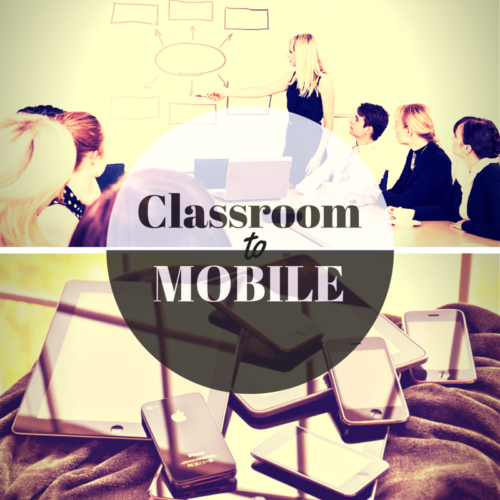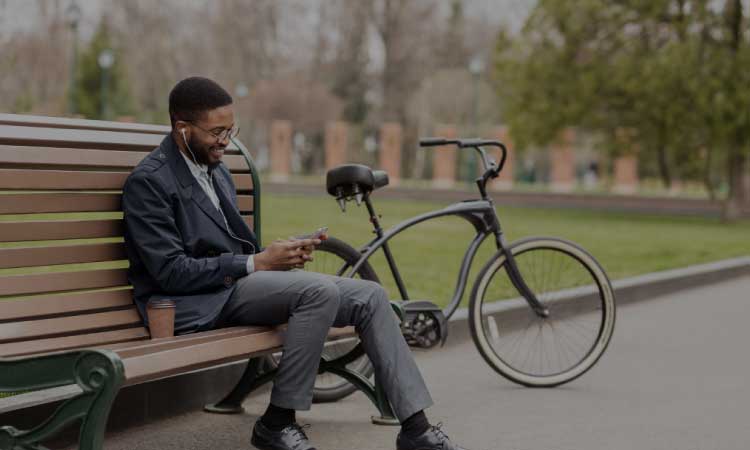5 Tips: Re-purposing Existing Courses for Mobile eLearning – Guest post by Tim Buteyn

If you’re creating a mobile training course based upon an existing eLearning course, bear in mind that not all content will fit into this new format. While you can repurpose your content for mobile learning and use some of the elements you already have on-hand (such as graphics or text), this doesn’t mean every piece of your current eLearning course should be moved, verbatim, to the new mobile training course. Instead, pick and choose the key elements and pieces of content that best serve the learning goals and/or objectives.
Here are a few other considerations to keep in mind when making the transition to mLearning.
Location: Where will your mLearning be accessed?
As specifically as you can, determine from where you expect your users to access the training.
Ask yourself these questions:
- Do you expect people to view training while commuting or during other scheduled downtime?
- Can you assume they will have headsets for audio available?
- Is your content structured in a way that can accommodate short windows of time these learners have open?
- If users are on the factory floor, or in a noisy shop, are their hands too greasy to use the touch screens?
- Have you confirmed the background isn’t too loud for mobile sound to work?
All of these environmental deliberations are things we didn’t need to worry as much about in a typical eLearning environment, but they are critical components to incorporate into your mobile design strategy.
Devices: How will the mLearning be accessed?
With the popularity of mobile devices, it’s increasingly likely your audience will have a mobile device of some sort. However, the expansive variety also makes it more difficult to predict exactly what device they might be using.
Luckily, there are some tools that can help. When possible, use Google Analytics to identify the devices and software you need to design for. This can go a long way toward designing and testing within the appropriate environment. However, keep in mind it’s much easier to sell stakeholders on the effectiveness of mobile learning if your target population uses a similar smartphone or tablet platform. If users employ a variety of devices, you’ll have higher costs of design and therefore higher costs of support.
Interface: Is your mLearning design user-friendly?
Design for touch. Mobile, whether on a tablet or a smartphone, is focused around tapping and touching. While most mobile devices support connecting external keyboards, you can’t realistically expect your users to have one. Instead, you’ll have to ensure your mLearning courses work well with touch.
Designing for mobile means designing for mechanisms other than the desktop. Largely, that means no more mouse. This creates some new considerations when thinking about your designs.
For example: No more hovering. The user must know visually they can tap on a button. Additionally, icons need to be large enough for a person’s finger to tap, etc. Buttons, for example, must be easy for the average user to press, even if he or she has large fingers. That means they have to be oversized and touch-ready.
Also consider device scale and context. Make or download physical-scale templates so your paper sketches are correct from the start. Put wireframes on devices so every step of review is perfectly at scale. Pick up the pieces of paper and phones to test out the interface. Does it work in the real world? You’ll be surprised at what problems come up with just this little step early in the process.
Material: Is the information digestible?
Size matters, and in the case of mobile training courses, keeping things brief and concise is important. As students and other participants use their personal mobile devices for access, they will most likely be paying for a limited data plan. The longer the session, the more data is used up. Also, things like multimedia use up a lot of data, so use these features sensibly.
Since your learners can use a mobile learning application basically anywhere, it helps to keep lesson plans short and easily completed within a short time window. Even with larger, more intricate topics, break the information down into bite-sized pieces that can be completed in a timeframe that works with the user’s schedule. Your audience is more likely to feel obliged to complete a 5-minute section rather than a 30-minute course.
Remember: Tailor-make your mLearning courses
A saying attributed to Nokia states, “Don’t shrink, rethink.” There may be an inclination to port your existing desktop eLearning modules (without much alteration) over to mLearning just because that capability exists. Instead, you should tailor mLearning for the unique and personal experiences that mobile devices provide.





